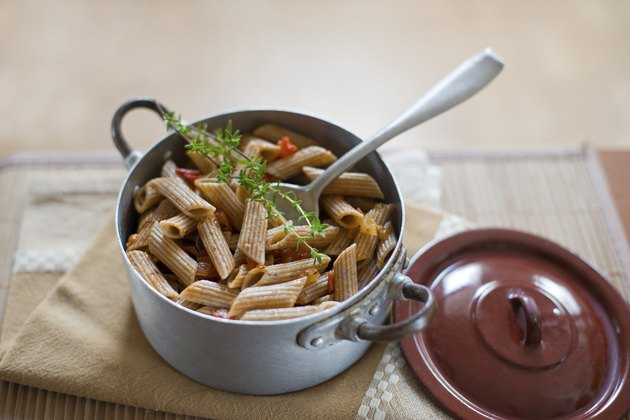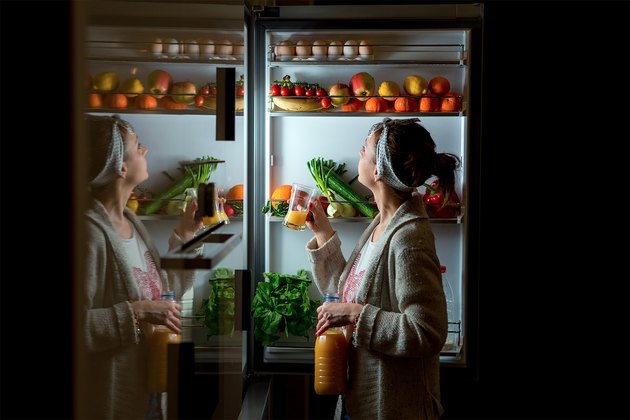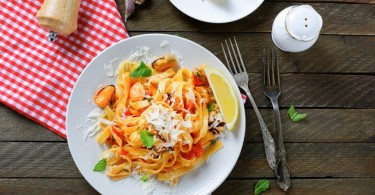For years now, you’ve probably heard that you should eat bigger meals earlier in the day. The reasoning behind this seems pretty intuitive – by taking in the majority of your calories in the morning or early afternoon, you’ll have more hours available to burn them off. Which is why so many popular nutrition programs advocate front-loading your food and limiting calorie intake –especially carbohydrates –after dark.

Advertisements
So for those who’ve followed this approach for years, here’s a reality check that might blow your mind: It may make more sense to consume the majority of your daily calories, including carbs, between dinner and a late-night snack. Here are four reasons why.
REASON #1 – NATURAL INSTINCT
Ancient man spent his days tracking, hunting, and gathering food, and his evenings relaxing and feasting on whatever he’d caught. Instead of going against evolution, why not spend your days “hunting” – in the form of work and training – and eat the majority of your calories at night in order to refuel, recover, and prepare for the next day’s battles?
But won’t all of those nighttime carbs make you fat? Not according to a 2011 study from the Obesity (Silver Spring) Journal, that compared a feast-style dinner pattern with a more conventional dietary approach. The study found that the experimental group, which ate most of its carbs at dinner, experienced greater weight loss and sharper reductions in abdominal circumference and body fat than the more conventional control group.
How can that be? Let’s take a look at the math
REASON #2 – THE NUMBERS
Eating the majority of your calories, including carbs, seems to run contrary to most nutritional programs. But does it really?
Even if we consume five to six small meals and snacks a day, rather than eating three square meals, most of the time our dinner winds up being larger than breakfast or lunch. If we add a late-night snack to the equation – which most of us should, to avoid a muscle-wasting 12-hour fast between dinner and breakfast – then it’s easy to see how we might get half of our calories after 6 p.m.
If you train after work, or even after dinner, the numbers shift even more dramatically towards the nighttime. Your post-workout recovery meal –even if it’s just a shake or smoothie –is going to tilt your daily calorie total even further toward the evening.
When it comes to carbs count goes, backloading might be the best idea out there. By saving your natural starches (like yams, sweet potatoes, and brown rice) for dinner and eating lighter, fiber-rich fruits and vegetables during the day, you maximize fat-burning hormones while you are active during the day. This gives you a longer stretch of time where you are burning fat more efficiently.
Plus, when glycogen stores are depleted after training and (or at the end of a day of lower-carb eating), nighttime carbohydrates restock your energy reserves first before spilling over into fat stores. Think about it: If you drive your car around all day and the gas tank is empty, you need to fill it up for the next day. The only way you can get into trouble with this approach is if you really overdo it, and those carbs overflow the tank.
Advertisements
So think of every 24-hour span as two distinct nutritional periods. Eat lighter during the day so you remain in your natural fat-burning, energy production state (hunt mode). During the evening hours, provide your body with the raw ingredients it needs to build and maintain muscle, store energy reserves, recover from the demands of the previous day and prepare for the next one (feast mode).
REASON #3 - PSYCHOLOGY
Another human instinct is to overeat in order to stockpile energy for times of famine. This made sense during caveman times, but not in the modern era where food is readily available.
We need to structure our diets in a way that satisfies this natural urge to feast without chronically overeating. The human brain works on a sacrifice/reward pattern. Most people can cut calories, eat light, and make better food choices during the day if they can reward themselves with a satiating meal at night.
The reverse is not true, however. It’s much harder to reward yourself with food all day and then try to sacrifice by cutting back at night. How many nights in a row can you "just eat a salad" before Ben & Jerry start showing up in your dreams?
Once you grow accustomed to it, however, it is easy to eat light during the day. Adrenaline kicks in making you more alert and efficient in tackling daily challenges. Food becomes an afterthought while productivity improves.
Contrast that with a large lunch that leaves you tired, lethargic, and with an inability to think or focus.
Save that larger, carb-loaded meal for dinner, when you naturally want to relax, eat big, and hit the sack a couple of hours later. Carbs trigger serotonin release, which makes us feel content and induce sleep. Many athletes that train hard and try to cut carbs at night complain of insomnia. Now you know why.
LESSON #4 – PRACTICALITY
As long as you account for total calories and food choices, meal frequency and food distribution is less relevant in terms of fat loss, though it makes sense to eat more at night. The key is to make the diet fit your life, not the other way around, to give you the best chance of succeeding.
Most of us are not full-time athletes. We are part-time athletes with full-time jobs. Optimizing food distribution patterns is a key factor in establishing a nutritional program that’s a functional, long-term lifestyle plan as opposed to an unsustainable, quick-fix diet.
Think in terms of being like a caveman during the day. Emphasize lighter meals and snacks based on lean proteins, veggies, whole fruit, and small servings of nuts. Save starches for dinner.
Then, when night comes, go Japanese village-style. Eat a bigger, satiating dinner based on lean proteins, veggies, and some natural starch foods like yams, potatoes, or rice with servings based on body size and activity levels.





Comments